

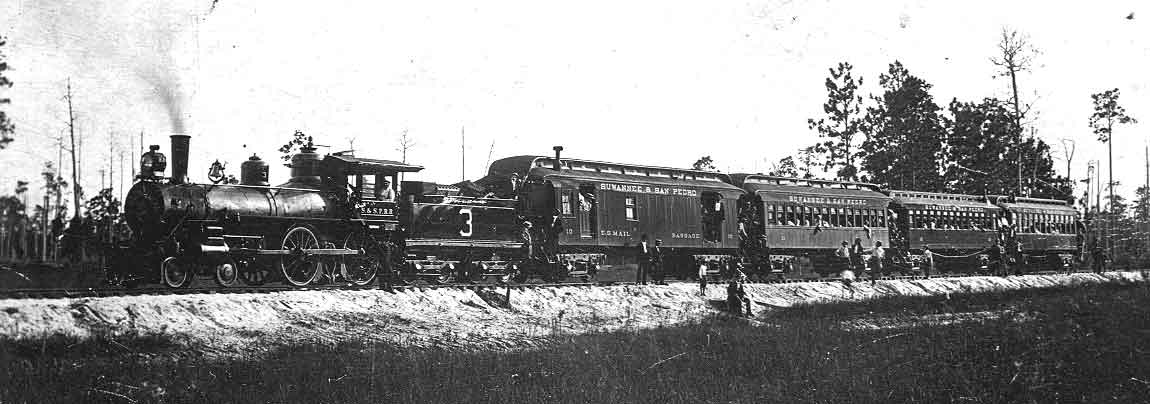
When we last left the Drew Lumber Co. they had just took over the Suwannee & San Pedro Railroad's charter. This happened on July 1, 1899 but they quickly amended the charter 20 days later extending the route from Live Oak to Mayo, Perry and Deadman's Bay on the Gulf of Mexico. For their $35,000 in stock, the Drew Lbr. Co. provided 800 tons of 35 and 40 pound steel rail and their two logging locomotives, #1 a 33 ton Baldwin 2-6-0 and #3 a 50 ton Baldwin 4-4-0.
With the threat of the Live Oak & Gulf RR expanding across the Suwannee River to Mayo the S&SP decided to build from the river to Mayo first. Construction would begin in May of 1900 directly opposite of the LO&G's terminal at Peek, with all equipment and material being barged across the 100 yard wide river. Construction was completed by July 3rd but regular service on the line was never attempted, though occasional trains were run from time to time. In July surveys were being made for the route to Live Oak and for a suitable location for a draw bridge across the river. By November the S&SP had signed a lease with the LO&G for trackage and terminal rights into Live Oak.
Tragedy struck the Drew Family on September 27, 1900 when ex-Governor George F. Drew died, from heart break a few hours after his own wife had died. This event propelled the youngest son Frank Drew full steam into the railroad project, dragging his older brother George L Drew along. Frank began in earnest to find funding for the S&SP and because of an event that happen at the beginning of 1901 he was able to find it.
The event was the failure of the Tallahassee & Southeastern RR to build a route from Tallahassee to the Suwannee River by the end of 1899, thus defaulting on its charter and opening up large amounts of State lands in Taylor and Laffayete Counties that had been pledged as a land grant. The State offered these lands for sale in 1901 and many lumber companies including the Drew Lumber Co. were purchasing these lands for logging. Now a railroad was needed to exploit this landfall and the Drew's were in the pole position for the race. Now all they needed was a financial suitor to jump start the construction.
That suitor was the Seaboard Air Line RR's president Skelton Williams, which had just purchased the Florida Central & Peninsular RR and would be the primary carrier to move the lumber to Jacksonville's ports. After all they saw the following prospectus on the route of the S&SP: 785 million feet of virgin Yellow Pine near the mainline, 283 million feet on spurs, 2.68 million railroad ties, 300 thousand barrels of turpentine, 900 thousand barrels of rosin and 100 million feet of virgin cypress. Yes there was plenty of money to be made transporting this wooden wealth from the S&SP to the ports and mills around Jacksonville and the Seaboard had the best direct route.
So
Skelton Williams and his Baltimore
banker J.W. Middendorf decided to court Frank Drew and his S&SP
and
they quickly hammered out a bond financing agreement which would
advance
cash per mile built using the bonds as collateral, with two
stipulations
that all drafts be drawn on the International Trust Co. so that the
backers
could not be traced and that the S&SP sign a preferred
connection agreement
with the Seaboard. They quickly received a check for that portion
already
built and construction began in earnest. The first order of business
was
reconstructing the original mainline to the new river crossing which
was
suitable for the used drawbridge they had purchased for $15,500. The
grading
on the east side of the river between Wilmarth (named after business
associate
Thomas Wilmarth, who was the first Chairman and President of the
S&SP)
and Stokely Junction on the Live Oak & Gulf was completed on
May 8,
1901.
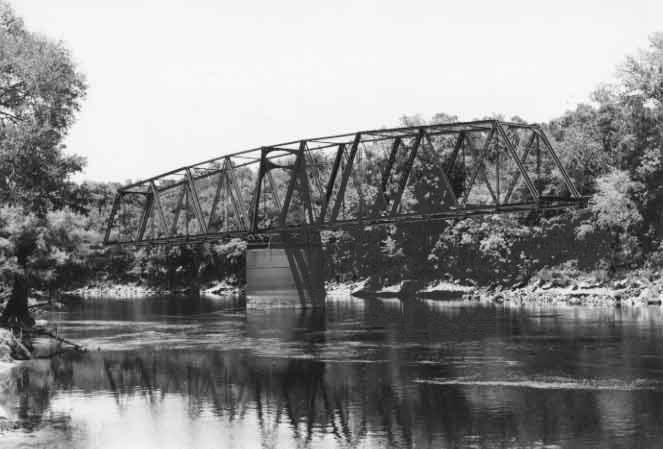
This photo of the Drew Bridge was taken by
myself in
1986. Bought jointly by Laffayette &
Suwannee Counties for possible use as a
road bridge,
its been sitting in undisturbed in the open
position since 1920. A recent photo by a
friend in the
area shows little change. This bridge is
operated by a crank in the middle of the
span.
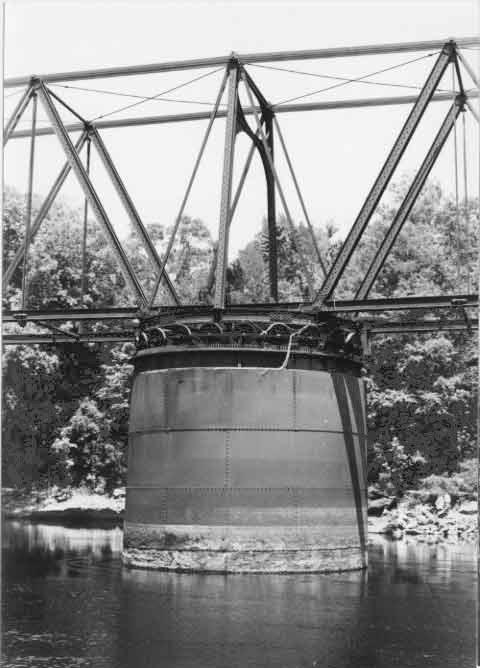
A close up of the turntable like detail of
the Drew Bridge.

Meanwhile the S&SP continued it
assault west of Mayo reaching the Fenhollway River by June of 1902 with
only 3.5 miles remaining to reach Perry, which was projected by the end
of October. Then the negotiations with Seaboard broke down and railcars
loaded with construction material began to get lost. This only worked
to
make the Drews more determined to stand up for their rights against the
larger railroad. Then in October Middenorf sold their loan to the
Southern
Investment Co., a Seaboard controlled company. They also purchased the
loans of the Live Oak & Gulf and was determined to merge both
of companies
into one. They also complained that the Drews must sign the prefered
connection
agreement with Seaboard. To force the Drews to sign they had the
LO&G
cancel their lease agreement locking them out of Live Oak.
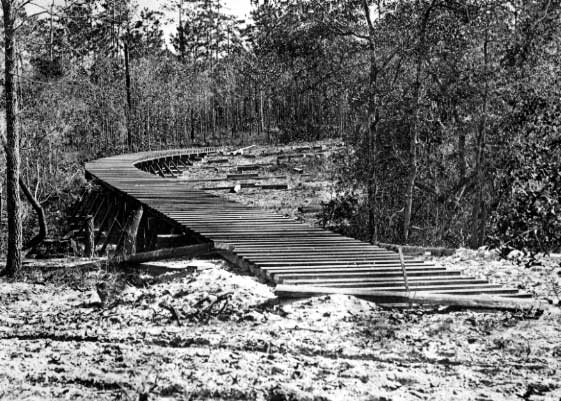
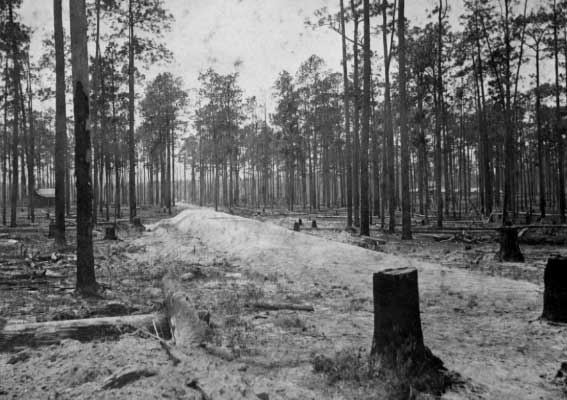
A couple of photos showing Suwannee
& San Pedro construction.
Then the Drews decided to strike back at the Seaboard, if they wouldn't negotiate a fair rate division on lumber to Jacksonville, they would build their own railroad to the Atlantic port. Thus the St. Marys, Suwannee & Gulf RR was born in February of 1903 to build from Jacksonville to Tallahassee, paralleling Seaboard's route. The first stroke was the beginning of negotiations to buy the Tallahassee & Southeastern which ran from Tallahassee to Wacissa, thirty miles west of Perry. This did not bear fruit as they wasted too much time and Seaboard knowing what was afoot purchased the T&SE before the S&SP could find the funding to do so.
On
May 1st, 1904 the Alton Branch Ry.
was put in operation between Mayo (Alton Jct.) to Alton. This 2.5 mile
branch was built by the Drew Lumber Co. to reach the large sawmill
being
built at Half Moon Lake (Lake Alton). The shops of the S&SP was
constructed
at Alton and was used by both the railroad and lumber company. The town
of Alton was named to honor their late father's birth place in New
Hampshire.
Also in May an agreement between the Southern Investment Co. and the
S&SP
was reached selling the LO&G to the S&SP for $47,800.
This ended
the need for a lease to reach their terminal in Live Oak.
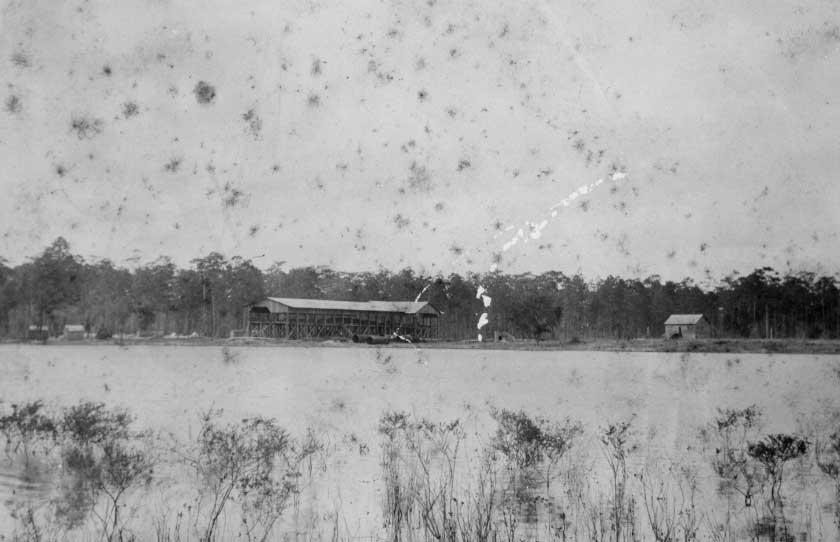
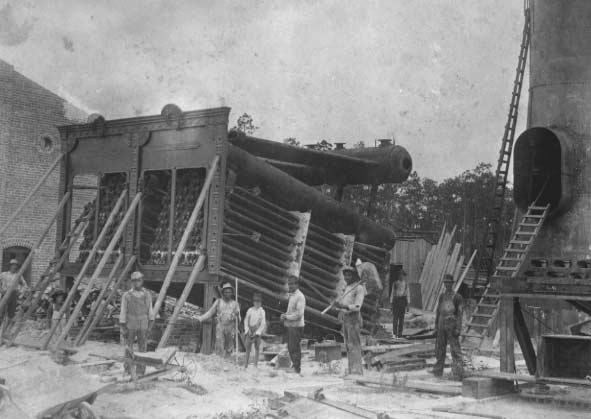
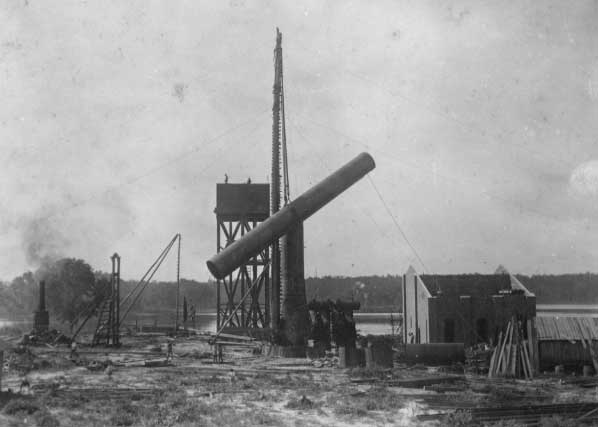
Three photos showing the construction of
the Alton sawmill
on halfmoon Lake.
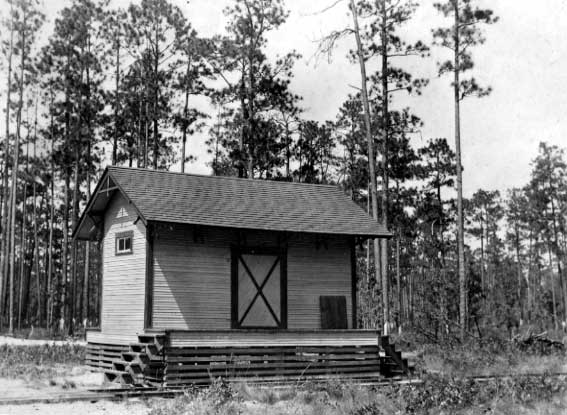
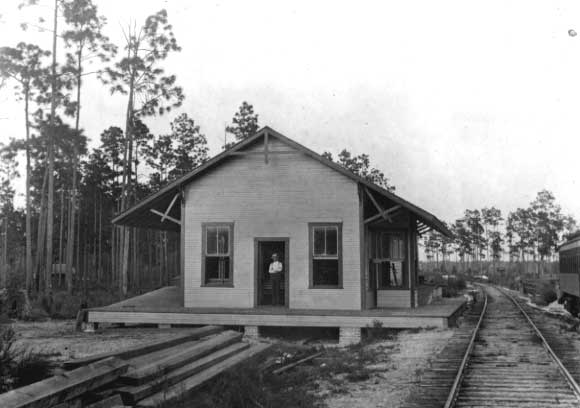
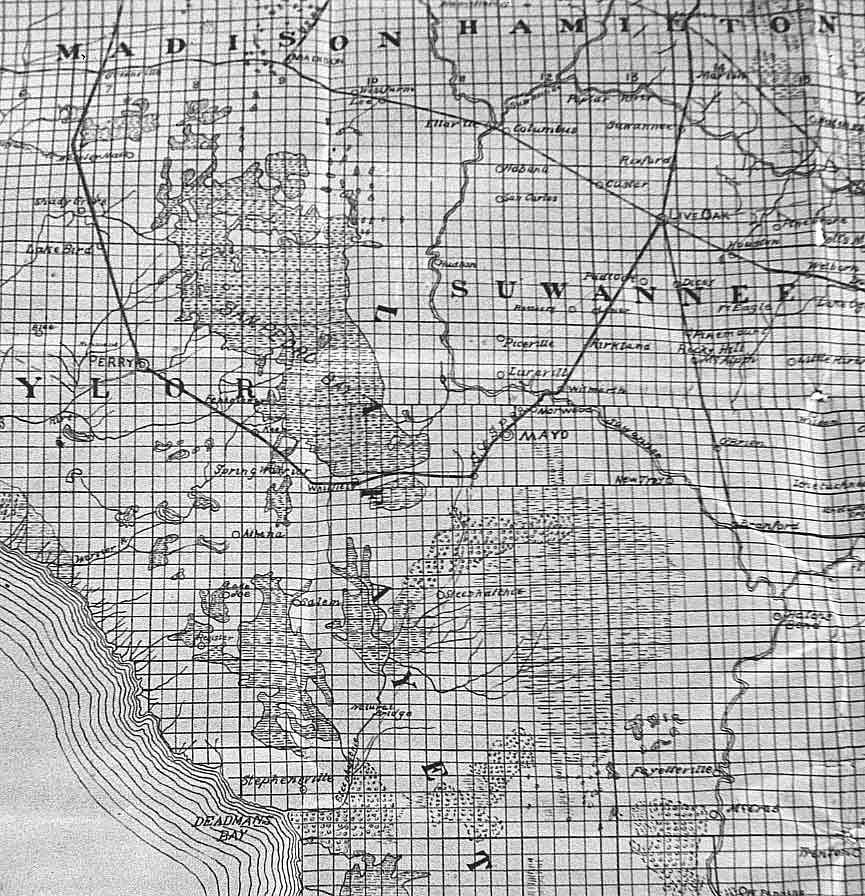
to be continued in Part III- The
Life and the Death of
The Florida Ry.